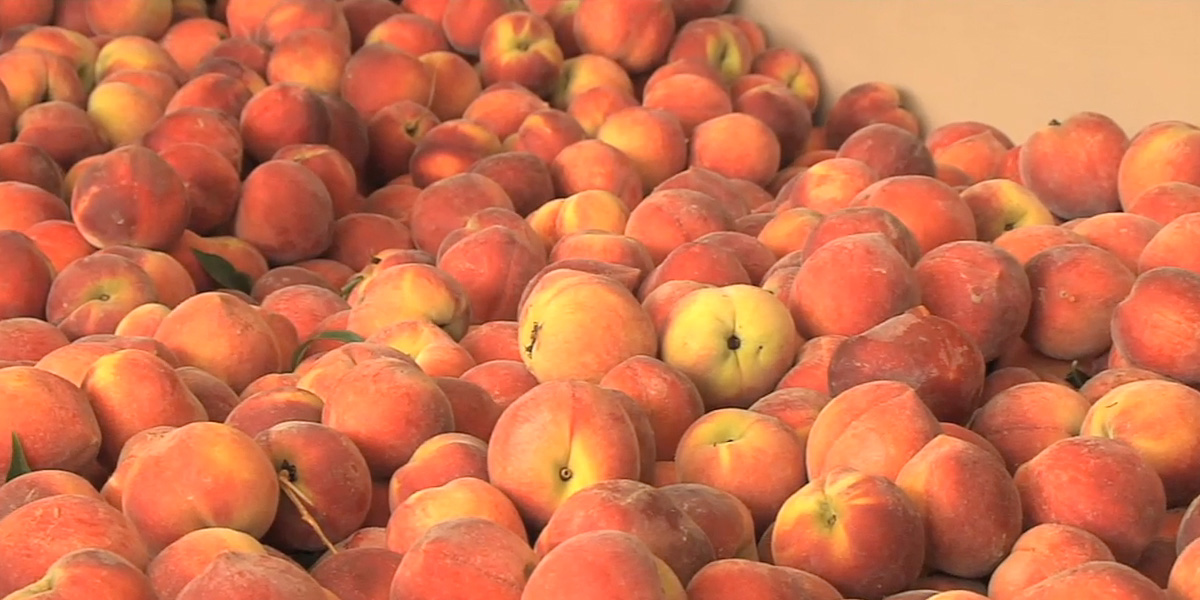MUSELLA, GA – Here in the Peach State, peach producers are relaxing a little now that we’ve had a pretty cold winter.
The past couple of years have not been great ones after warmer temperatures ruined the tree’s chill hours. According to the Georgia Department of Agriculture, last year, due to the warm weather, seventy percent of the peach crop in the state was wiped out. The winter season isn’t over just yet, but growers are optimistic about this upcoming season.
Lee Dickey, who works at Dickey Farms says, “last year was drastic in terms of cold hours and production. It was about an eighty percent loss or about twenty percent of our crop last year, so it was pretty dramatic, so this year certainly feels good. Hours have tracked to historic norms and just kind of really what you like to see in terms of chill, cold weather, and even got a little snow.”
Chill hours are the amount of time the peach trees need to be dormant in order for the new buds on the trees to be ready to start producing. Chill hours are counted when the temperature drops below forty-five degrees Fahrenheit and are critical for a successful crop.
Jeff Cook, Extension agent for Crawford County said, “Once they reach that, there are certain enzymes in the bud that actually switch over and say, ok, we’re going from dormant to now we’ve gotten our chill requirement and we’re going to switch over and start pushing and start vegetative and flower growth.”
So far, the trees have gotten a significant number of chill hours. Different varieties of trees require different number of chill hours, but here in the central region of the state, the tree’s hours have been reached.
“In Middle Georgia, right here, where the majority of the peaches that are shipped are grown, we range from six hundred and fifty hours up to eight hundred and fifty hours,” says Cook.
This time last year, they had only gotten less than half of the chill hours that they have now.
Cook says, “last year, we were at the same time right now that we’re talking, we were less than five hundred hours. At 500 hours, we were 150 short of our lowest chill varieties.”
Chill hours are counted from October 1 through February 15. They have gotten well over the number of chill hours needed but Cook told me it wouldn’t be a bad thing if it stayed cold a little longer.
“We also like for, after February 15, it’s really nice if it can stay cool. We don’t want it to be freezing cold, and we don’t want any freezes or frosts, but if it can stay cool on through bloom, that also helps with quality,” says Cook.
The harvest time is still a couple of months away, and even though they don’t have to worry about chill hours anymore, they do have some other concerns, like the possibility of a late frost like they had last March.
“Generally, around mid-May is kind of when we anticipate harvest. The Spring weather can certainly affect that,” says Dickey.
Cook says, “we usually see a little bit of injury, especially our earlier blooming varieties from some freezes, but usually we’re leaving enough free wood, and enough blooms that we kind of guard against that and some insurance against some injury. You’ll have a little variation in the stage of development in that flower along each stem too, so you have some that are more far along than other flowers, so we kind of hedge against that by leaving more flowers on there and free wood.”
By: John Holcomb

